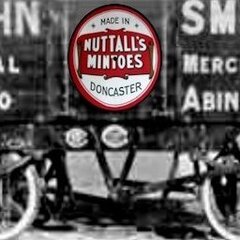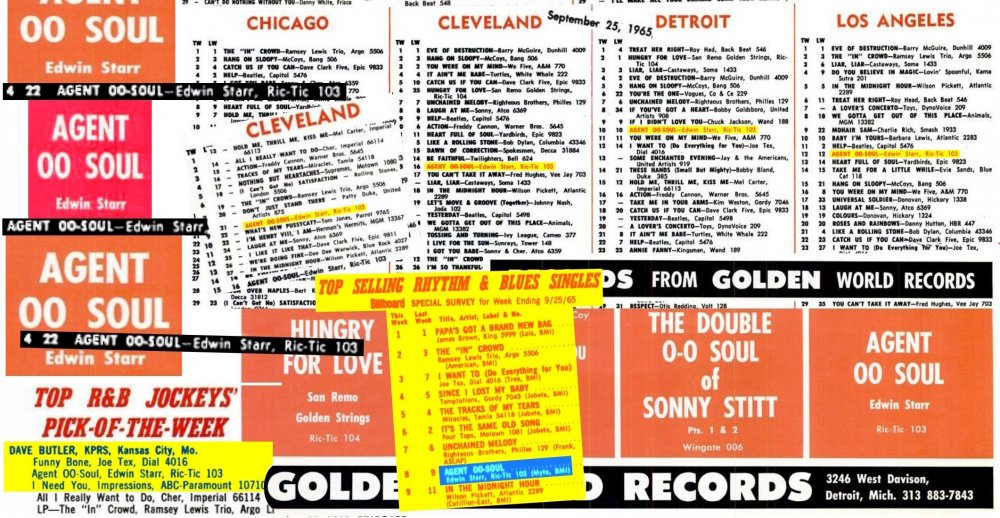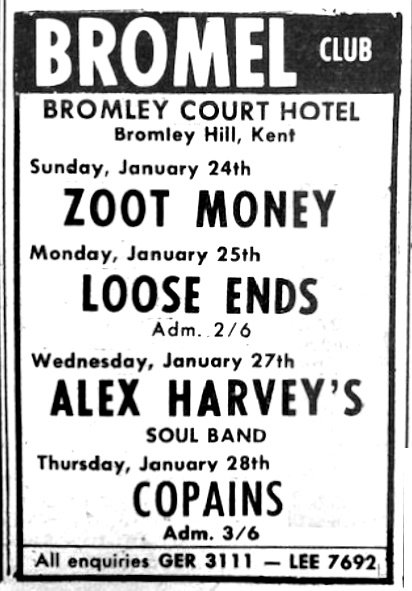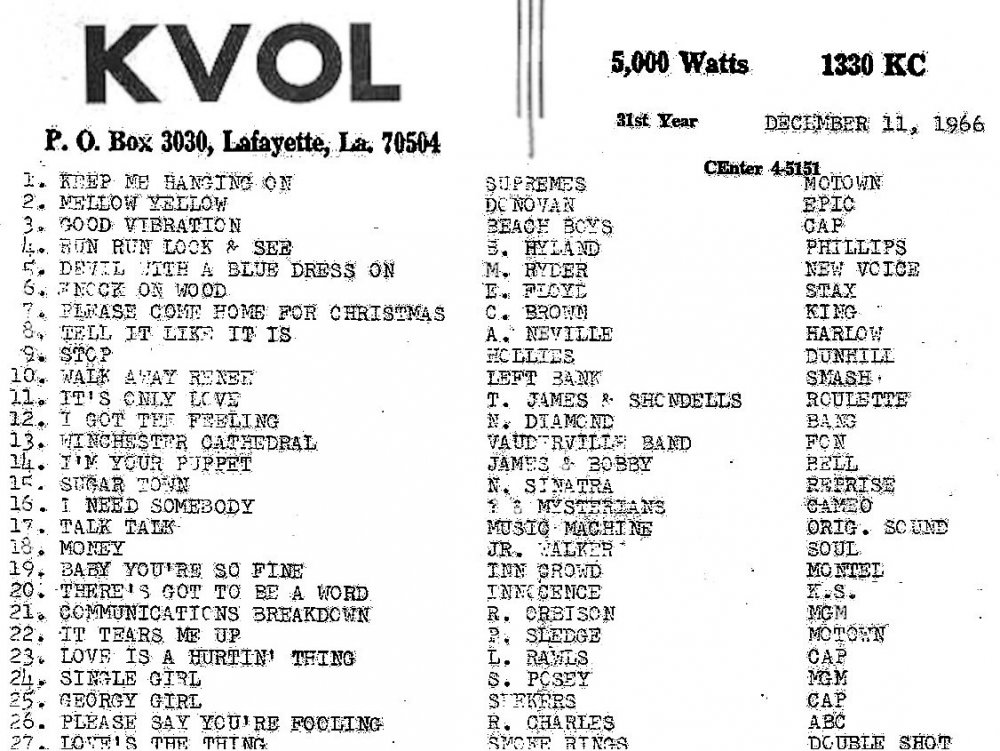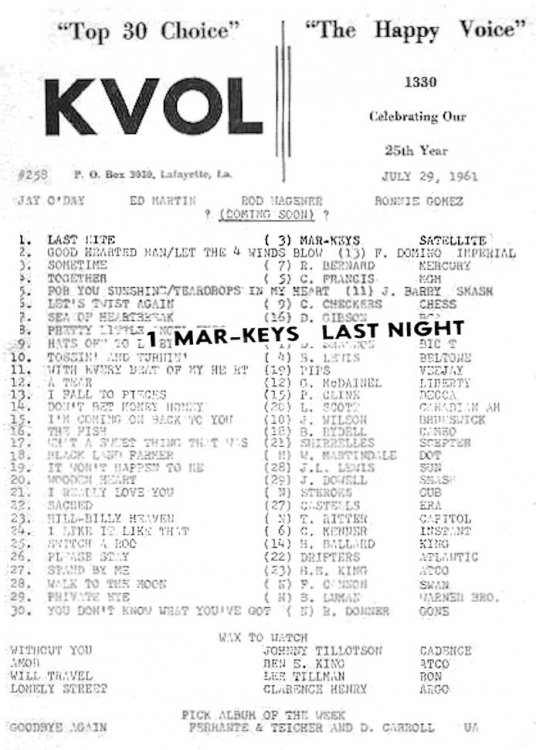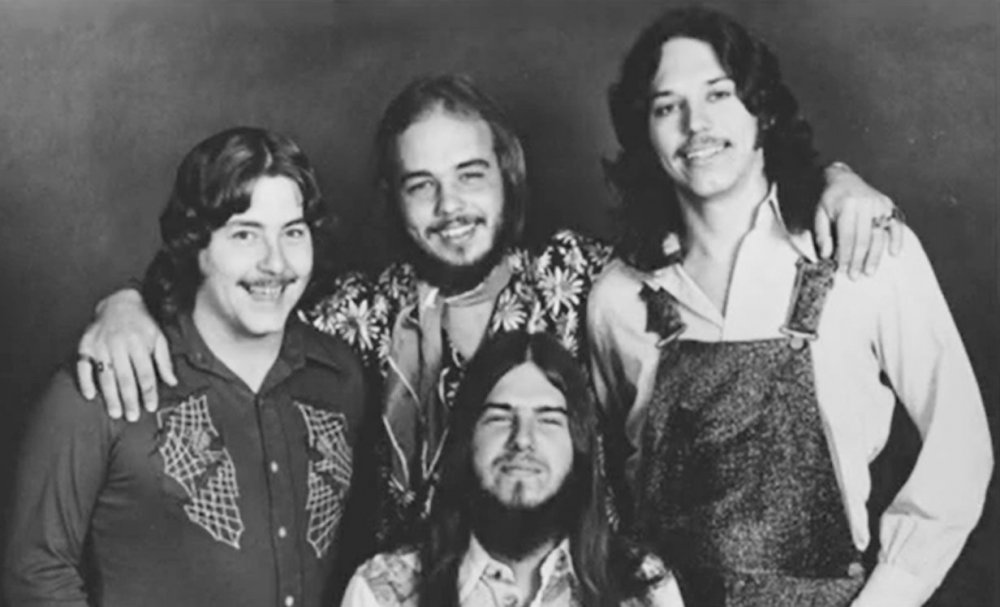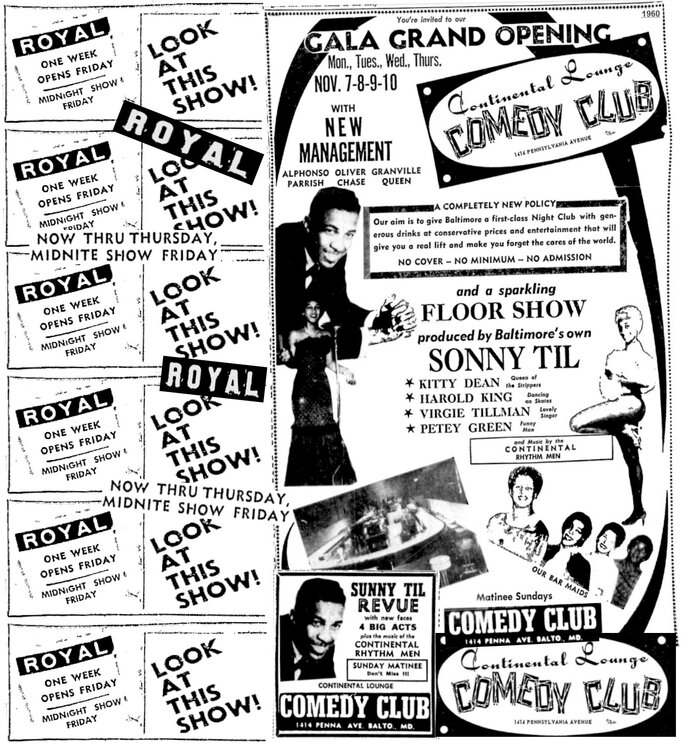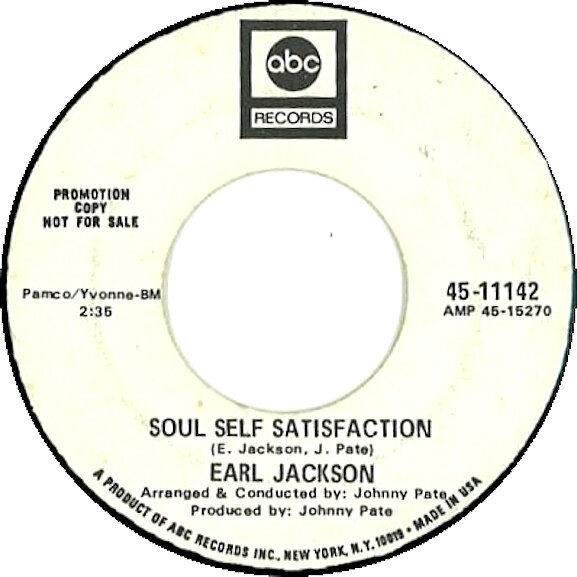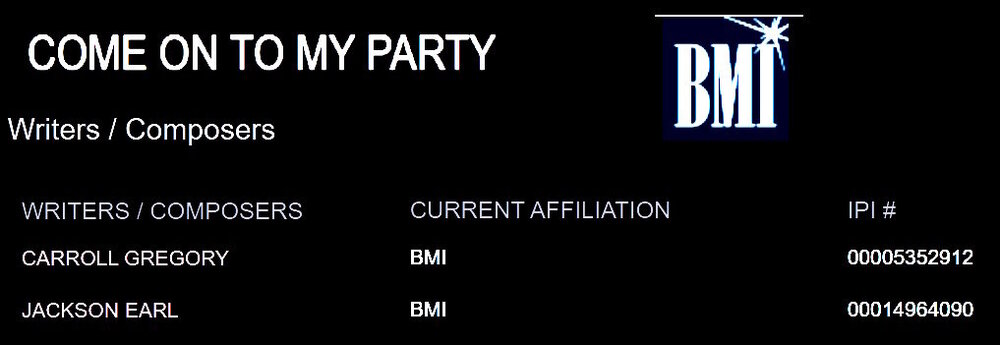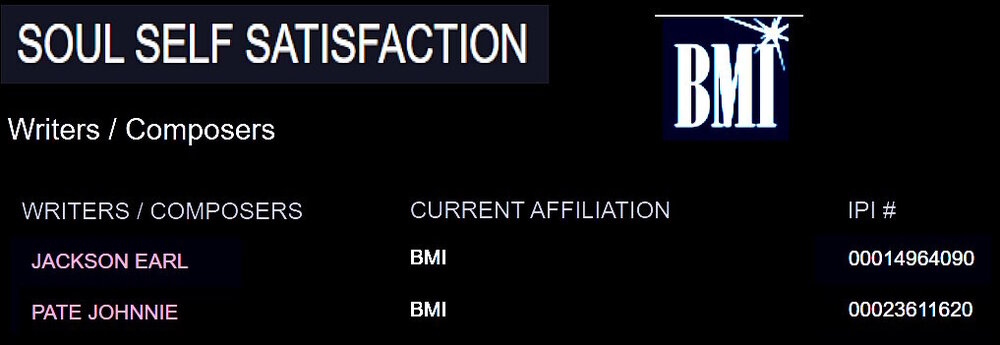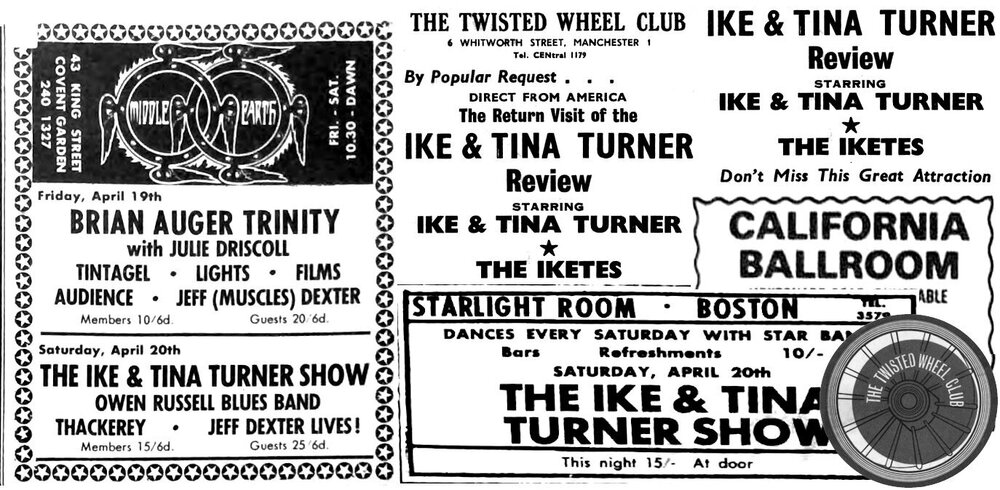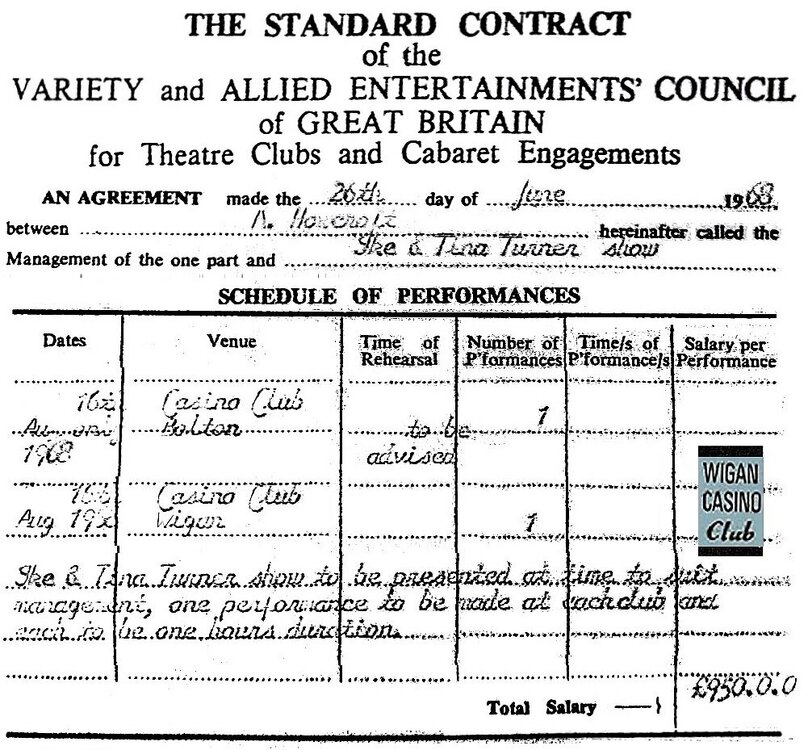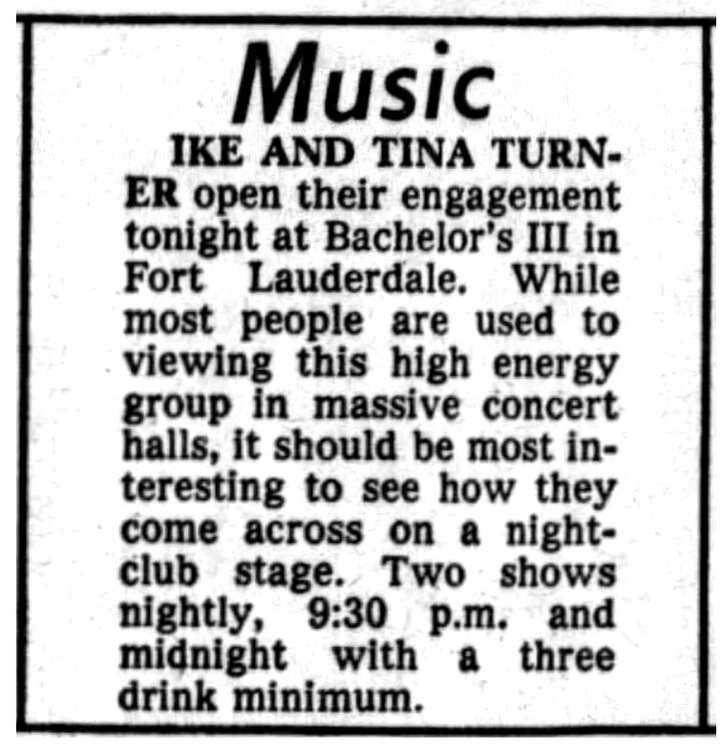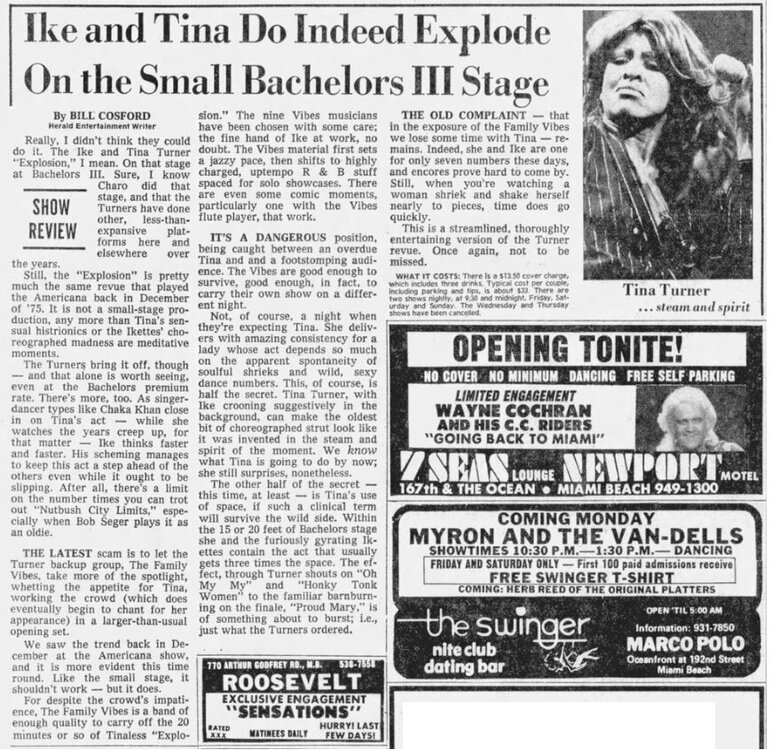Everything posted by Roburt
-
Cover Versions of soul 45 hits (US) ...
I write for a soul music mag at present -- S U Nth (& for others in the past), so my pieces can be very WORDY (sorry). But finding obscure soul facts is my passion. Ady C refers to me as a soul sleuth. I did this research as a 'side issue' to the latest article I'm preparing. At first, I thought I'd just dump all the facts (as only some are relevant to my actual article). But then I decided to write it all up as a short piece to post on here. It's hard too see the details in my pics above, so I've split the big one in two ... Lots of other tracks have received similar treatment down the years but Edwin's initial 45 and the way it's popularity spread out from Detroit to influence other artists seemed just about the ideal example to use (IMHO).
-
Cover Versions of soul 45 hits (US) ...
Just ahead of Edwin signing with Ric Tic / Golden World, he was still gigging as the male singer with Bill Doggett's band. It was Bill's refusal to help Edwin record "OO Soul" that led him to quit the band and go solo. When his 45 hit big, Edwin had to head straight back to Cleveland (where he still knew many musicians) to hire the guys that became his backing band ... His first REALLY BIG live shows were @ the Harlem Apollo in late August 65 (a week's engagement). Others on the bill with him were Jerry Butler, Staples Singers, Gladys Knight & Pips, Jamo Thomas & Royalettes. Meanwhile, Alex Harvey was over in the UK doing club gigs & performing "OO Soul" live ...
-
Cover Versions of soul 45 hits (US) ...
Edwin's Ric Tic 45 was the first big seller on the label ( I think -- could any Detroit experts put me right if that ain't so) ... so the label took a few weeks to 'break' the 45. For that reason, the Canadian version of the single didn't escape till that August (after it had established a US profile). Copies of Edwin's US 45 must have found their way to the UK by that August too ... as Scottish blues / soul singer Alex Harvey cut a version for UK Fontana release and that escaped here at the start of September (65). With the songs US / Canadian & UK profiles, I'm surprised a UK label didn't try to do a licensing deal with Ric Tic / Golden World back then. Alex Harvey had a decent UK club / record profile back then and it seems he got to perform the song on a prime time UK TV show (no doubt just miming to the record). That video doesn't seem to have survived. A US TV clip of a different version has survived though ... Yet another US cover version came out in January 66 on Command (by Dick Hyman; an organ instro version).
-
WHAT ARE THE BIGGEST 'MODERN' NIGHTER SOUNDS?
A good way to check is to visit the Facebook group >> MODERN SOUL VINYL .... but just like at NS events; records / tracks (they don't HAVE to be available on vinyl to get MS scene plays) come into & go out of favour. So a biggie at Snaith in the 70's or one that was massive @ Thorne in the 80's, may have slipped into near oblivion now. ... but be warned, items get posted on the MSV site that were released from 1970 right up to present day releases. In the meantime, here's a decent one to be going on with ... there are also other versions from the likes of the Staples, Kenny Thomas, etc ...
-
Cover Versions of soul 45 hits (US) ...
-
Cover Versions of soul 45 hits (US) ...
We all know that most UK 60's beat groups got their start by covering US R&B / soul hits both in their stage shows & on record. BBC radio didn't help much as they didn't have much 'needle time' allowance, so featured live sets on many shows -- these being by the beat groups doing covers. When BBC radio did play records, they seemed to favour the UK cover versions over the US originals. Thus for an American R&B / soul hit to make the UK charts it had to become a big club sound (ahead of the pirates hitting the airways). BUT things weren't too different in the US. A soul act who had a hit on their hands would be added to a soul revue package that would play many of the venues on the chitlin circuit. But, most of the chitlin circuit venues were in the northern states , California or down the US east coast (Boston, New York, Philly, Baltimore, DC, Norfolk, etc). In more rural areas, fans hardly ever got to see the acts who were having hits. That's one reason why in states such as Texas, lots of fake groups would play out-of-the-way venues (the Masqueraders took their name coz they had participated in such ruses in their early days). Fake versions of Archie Bell & the Drells did gigs all over when Archie was overseas in the forces. Miami was also a bit far for lots of acts to travel, so Florida had it's fair share of 'fakes' doing gigs. However, dishing up versions of national hits for local punters wasn't just left to 'fakes'. Most locally based groups were playing R&B / soul sets on their live gigs in the 60's as this is what the audiences wanted. Many local groups started out as pure cover bands & as their musical skills improved, they would start to introduce original songs in their acts and this would lead to them getting to record those tunes. Sometimes though, a national hit would become so popular when performed by a local act that they'd be given the chance to record their version of the song. An example of this was Edwin Starr's initial 45 release/ hit -- "Agent 00 Soul". His 45 was released in June 65 and (though it was on a small Detroit label) it took off quickly. From initial plays on Detroit radio stns, it was soon getting airplay all over. Golden World could see they had a big hit on their hands, so they started placing ads in the big US music mags and doing promotional work over a large geographic area. In no time the 45 was on radio stn charts in many parts of the US. Initially it was the R&B stations where it did well, but as it's popularity continued to spread, it started getting on pop station's charts too. The 45 was on R&B radio stn charts in the northern US cities by late June 65, it then slowly extended it's reach and by early August it was getting extensive radio exposure over a wide area. It would climb the charts in say Cleveland, that fact would be reported and DJ's in other cities would pick it up and start giving it plays. So while it's peak popularity may have passed in Detroit, Chicago & Cleveland by mid August, in other cities it would still be climbing the local charts. By September it was doing well in enough areas to figure on the national R&B charts, just weeks later it was climbing the national pop charts. One area where it was slow to catch on (almost certainly due to a lack of copies reaching the area) was Louisiana. It initially took off in New Orleans and was charting there by October. It also made it out to more rural areas of the state, with DJ's like Paul Thibeaux spinning it on KVOL. With "Agent 00 Soul" filling the airwaves in the region, many local acts started including it in their live shows. It became so popular for some acts that they were even asked to record their versions of it. Thus US cover versions of Edwin's first release made it onto US record store shelves. P.S. . . . though it was a massive US hit, that success didn't lead to much international interest. It did escape on Reo in Canada but then Detroit radio stn signals reached deep into Canada & many local music fans would tune into Detroit radio stns rather than their own local enterprises. The odd Canadian stn had a large audience in their own rights -- Windsor based CKLW being one example. So most 45's that had been big in Detroit would get a Canadian release. Edwin's record failed to attract much interest from UK / European based labels, an omission that would soon be remedied. BUT BACK TO LOUISIANA & THE US -- the impact "Agent 00 Soul" had there was extensive ...
-
Catacombs, 1972.
The camera obviously wasn't set with red eye reduction as all their eyes look kinda weird .... 🤣
-
Last Flight/One Way records
I now have the full SP on Cody Miller's music career ... his stint with Last Flight came a few years after he first turned professional. He'd been in 3 other group's ahead of Last Flight (one of which recorded & had collectable 45's out). He then was a member of 2 other groups (who both recorded) after Last Flight. I'm not putting much of the info up here at present as I'm writing an article on him that will be going in the next edition of SOUL UP NORTH. He's a very helpful guy with a good memory -- though he had no idea some of the old tracks he played / sang on were now highly collectable. He also had no idea the Last Flight 45 had been reissued over here around 16 years ago. He was thrilled to learn that his old work in the music biz was still valued & played. He never realised (with the local Louisiana music scene being so localised) that copies of those old 45's had even made it out of his home state. This was the local radio station he used to listen to -- though it was a pop stn, it played lots of R&B / soul tracks and this was what sparked his love of soul music. He listened from when he was in school to after he was playing in groups. Till soul went out of fashion locally in La (the mid 70's), it was cover versions of soul hits that his bands all played on live gigs.
-
Andy Rix with details of a new Shrine Article and info
The Shrine stock in 1968 was still mainly held on the shelves of Waxie Maxies record warehouse on 14th St in DC. Round the corner (on 7th St) was Waxie Maxies main record store. In the 1968 riots triggered by the slaying of Martin Luther King both buildings were attacked and burnt out. Hence the lack of Shrine vinyl for us collectors to chase.
-
Last Flight/One Way records
Kev Roberts & Dustbin Stanley in the group; the track must be an early 'taylor- made' effort.
-
Last Flight/One Way records
The lead vocalist on the 45 was Cody Miller. This is his band from those times; I presume it's Last Flight but am awaiting conformation of that fact.
-
Out Now - Soul Up North Magazine #120 - Summer 2024 Issue
My article in the new edition is .... #SAY IT AGAIN, THE STORY OF A SONG It's an attempt to chronicle the history of a particular song & I chose this oft recorded one co-written by Bunny Sigler. It was cut by artists based all over the US, with just one version being by a Philly based guy. So, to get others to know of the song's existence, Bunny must have cut a demo version and sent out copies of that demo to various cities. I am not aware of any acetates of the song coming to light ... maybe someone on here knows of one. My fave version of it was by a Japanese jazz funk guy.
-
JUST FOR MY OWN SELF SATISFACTION ... maybe correct ...
Sonny Til may have been going up to New York to record (with Gregory Carroll) in 1960, but he was still based in Baltimore & doing lots of shows locally. He had a revue show that toured & played locally. His entourage included his 'young niece' Virgie Tillman (aka Virgie Till) at the time and she was given her own part of the show. Only trouble was Sonny's wife knew the members of his family and so knew their was no relative called Virgie ... so their marriage was soon over ...
-
JUST FOR MY OWN SELF SATISFACTION ... maybe correct ...
A Doo Wop / R&B / soul story ... . . . . this tale starts in Baltimore in the 1940's. Charlie Carroll was in a group called the Four Buds, who made recordings with the Earl "Fatha" Hines orchestra. Charlie had a younger brother John, who decided to follow him into music. He started his own group, the Metronomes. They went along to the Royal Theatre (1950) when Johnny Otis was the star attraction and Savoy Records' owner, Herman Lubinsky was also in attendance. Lubinsky was looking for a group to back up Little Esther (Phillips). The Metronomes became that group and were soon recording themselves under the name of the 4 Buddies. John Carroll took on the stage name of GREGORY CARROLL and forged a music career with the 4 Buddies, then the Orioles and Dappers. Along the way he also got into production work and song writing. Next he started a duo, Peg & Greg (1957). By 1960, Gregory was producing fellow Balto singer Sonny Til (ex of the Orioles). He got back into singing by starting a gospel group, the Halos. This group included Doris Troy (aka Doris Payne) as a member. Doris went into secular music and by 1963 had a big solo hit with "Just One Look" that she and Gregory Carrol had penned (the 45's B side being penned by Doris, Gregory & Rex Garvin) . . . . . Just weeks later, Henry Glover cut the Flamingos in New York on a song titled "Come To My Party". This song had been written by Gregory Carroll in conjunction with Earl Jackson (Copyright: words & music -- GREGORY CARROLL & EARL JACKSON for Figure Music, Inc. -- 23 JUL 63). Gregory & Earl Jackson have 8 joint compositions registered with BMI . . . . . . . I'm unclear what happened next .... Across New York; early 60's .... ABC-Paramount Records were based out of New York but expanded to also have offices in LA (61) and Chicago. On the soul front, they had signed the Impressions in 1961. They also signed other people up to expand their 'black music' output. They needed extra song writers too on their team & so were offering work to NY based guys (Gregory Carroll & Earl Jackson being prime candidates, though Gregory Carroll was successful enough elsewhere to resist any approach). After cutting the Impressions in New York (1961/62), the group went back to Chicago to start recording there (in conjunction with Johnny Pate). The Impressions were soon ABC's top soul act and Johnny Pate was cutting lots of hits for the label. Because of this, ABC were sending New York black artists to record with him in Chicago .... .... ... SOME TIME PASSES ... ... In late summer 1968, Johnny Pate oversaw a Chicago studio session during which he cuts an EARL JACKSON on a track titled "SOUL SELF SATISFACTION" ... the subsequent ABC 45 would prove to be Earl Jackson's only release on the label and Johnny Pate (when asked) couldn't remember one fact about the song (which he co-penned), the session, the singer or anything at all about the whole affair -- Johnny stated "at the time I was so busy, I'd just go into the studio from 9 to 5 and cut everyone ABC sent for me to work with" ... ... RE: the song's composer credits ... I'm assuming Earl Jackson arrived @ the Chicago recording studio with a 'completed song' ... however Johnny Pate wasn't 100% happy with the thing, so he added his input during the recording session and so ended up with joint credit when the song was registered with BMI. SO .... an EARL JACKSON was a successful song writer in New York before the mid 60's ... ... THEN an EARL JACKSON cut "Soul Self Satisfaction" for NY based ABC Records after the mid 60's ... . . . . . . . . . MMmmmm . . . MAYBE IT'S ALL JUST COINCIDENTAL ... but just maybe ?? ... . . . . . if I'm wrong, then the EARL JACKSON mystery will just continue on ...
-
What's Your Favourite Cover Version
An earlier post ... Jose Feliciano was at his best on covers -- his take on "Golden Lady" is just sublime.
-
What's Your Favourite Cover Version
Alan Price had good taste in music. He liked his soul, so the Alan Price Set's initial four UK singles included his covers of "Any Day Now", "I Put A Spell On You" & "Yours Until Tomorrow". While an EP from the group released in France during the same time period featured "Barefootin", "Have Mercy" & "Getting Mighty Crowded".
-
The Motown Machine
Two other things to mention .... BG got delusions of grandeur in the mid 60's, wanting his acts to get bookings at the likes of the Copa in New York. For that reason, he signed lots of MOR nightclub acts who were already playing similar clubs. Lots of their Motown recordings were MOR tat, I don't know how their stuff made it thru quality control meetings. The likes of Barbara McNair was one such act (Billy Eckstine another). Their LP's were a mix of good traditional Motown tracks + lots of MOR rubbish. By the early 70's, BG had took his eye off the ball as far as the record side of the business was concerned. He put people in charge who weren't up to the task (Suzanne De Passe, etc). So from that point, lots of shite got released. Also vanity projects were allowed to go forward. Gwen Glenn productions, run by Gwen Gordy, being one such. From what I was told, she'd sign male acts that she wanted to date and then go partying with them for days on end. Not the ideal situation if you wanted good product.
-
What's Your Favourite Cover Version
Two latin soul cuts; both being cover versions of the same song ...
-
What's Your Favourite Cover Version
BB's original was great bluesy soul ... this runs it so close ... JOSE ... live ... Mr. Excitement doing good again ... opening a few doors too ...
-
Julian covey a little bit hurt
COVAY TRIVIA >> Back in 1963, the London based jazz guys were swopping over to R&B and many clubs in the capital were doing the same. Alexis Korner started up a Blues / R&B club (The Blues Club !) by hiring the Empire Rooms on Tottenham Court Rd. There his band would play + he'd book other similar acts. One such act being the Graham Bond Quartet. Graham himself having just moved from jazz (with the The New Don Rendell Quintet) to R&B. Also with Graham in that jazz band was Phil Kinorra (aka Julien Covey). By the time Graham Bond had started his own R&B band, Julien Covey had also moved on and was playing drums in the Brian Auger Trio, who became the Brian Auger Trinity ... this is Covey (Phil Kinorra) playing drums on this track ..
-
Bill Bush
Am I getting confused or is this not the 45 that only exists coz Paul Mooney got Stan Lewis to press up loads of copies for the UK market ?
-
Sonny Childe - A Thing Called Love
Is it a known song (A THING CALLED LOVE) or a new tune with a previously used title ? Sonny's father was career military, so he lived on many US bases in my different countries. He came to the UK sometime between 1960 & 1963 to perform as a singer. He played the Star-Club in Hamburg early on during his time in the UK / Europe but didn't land a record deal till summer 65. With the TNT he played all over the UK ...
-
Rarest/valuable/Sought "modern" soul records out there?
I have no idea of which is the rarest or the value of any sought after soul 45's; be they NS, MS, deep soul, sweet soul or whatever. But for me personally, I'd put the likes of ZZ & Co, Tony Fox (Love, Let Love And Be Loved), Bill (Space Lady), Bill Brandon (The Streets Got My Lady) + a few more as my fave MS sounds.
-
end of year telly ??
BTW, with regard to the impact seeing them live had on me at the time, I detailed it earlier this year when Tina passed. I posted the piece I wrote on the experience which I put on here a while back ..... thread >> IKE & TINA TURNER; UK -- 1968
-
end of year telly ??
Watched 'When Tina Turner Came To Britain' (BBC2) last night. Most on here won't remember or have attended an Ike & Tina live performance in the 60's BUT they were just electric. As a Melody Maker journo stated at the time (during both of the revue's first 2 UK tours), they put on the very best high energy R&B show ever seen in the UK at the time. I got to see them play the Wheel, though they also played the Mojo (66), Leeds (66), Harrogate, Chesterfield (68) and the Casino (68), but the Wheel was an ideal venue for the act. Small stage, packed club, high energy show, exited audience. I managed to get down front near the stage that night and the impact of the Ikettes dancing (& singing) just inches away from my face in their tight mini dresses left a lasting impression. Anyway, the TV documentary pulls together lots of material about those times (as well as later experiences Tina had in the UK). It captures those times as well as is possible + shows lots of historic footage of the revue playing live. If you missed it, I think it should be available on BBC I-Player.

